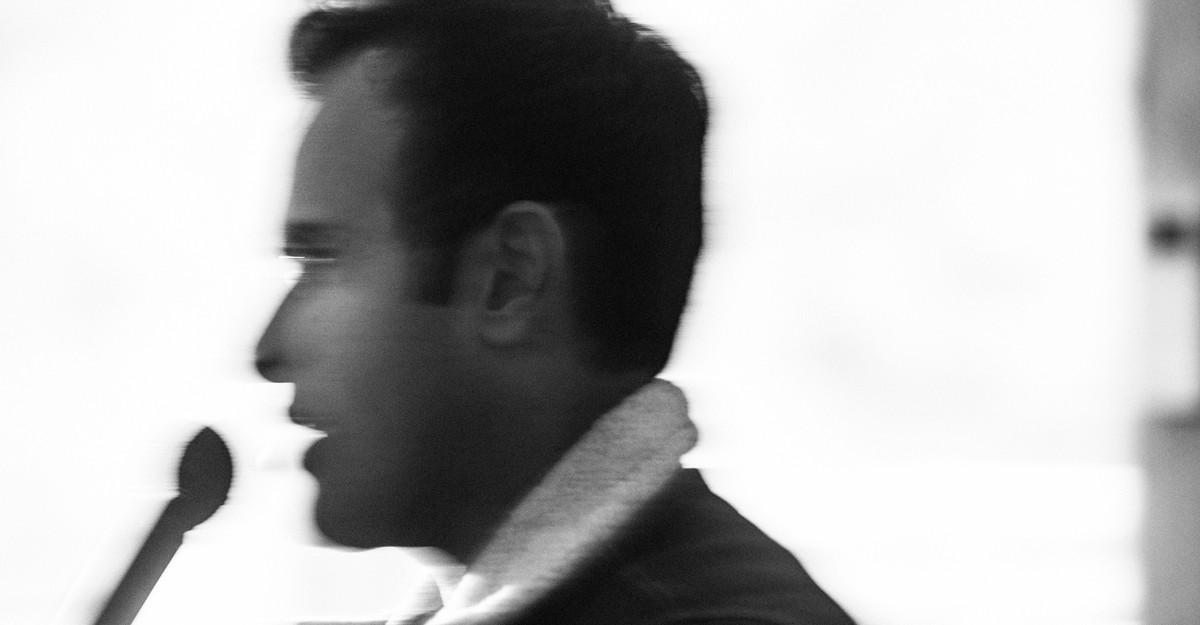The New Face of the ‘Great Replacement’

Midway through last week’s Republican presidential-primary debate, the entrepreneur Vivek Ramaswamy started running through conspiracy theories like a frustrated child mashing buttons on Street Fighter, alleging that the Capitol riot was an “inside job” and that the so-called “Great Replacement” theory “is not some grand right-wing conspiracy theory, but a basic statement of the Democratic Party’s platform.”
Right-wing apologism for January 6 is no longer shocking, not even from Republican presidential candidates. Trumpists often vacillate between denying it happened, justifying and valorizing those who attempted to overthrow the government to keep Donald Trump in power, or insisting that they were somehow tricked into it by undercover agents provocateurs. But the basic facts remain: January 6 was a farcical but genuine attempt to overthrow the constitutional government, which many Trump supporters think is defensible because only conservatives should be allowed to hold power.
It was slightly more bizarre to watch Ramaswamy justify “the Great Replacement,” a white-supremacist conspiracy theory holding that, in the words of the disgraced former Fox News host Tucker Carlson, “the Democratic Party is trying to replace the current electorate, the voters now casting ballots, with new people, more obedient voters from the Third World.” This conviction has motivated slaughter in Buffalo, New York; El Paso, Texas; and as far away as New Zealand. Seeing Ramaswamy invoke it was strange because he, the practicing Hindu son of Indian immigrants, is an obvious example of why it is a dumb idea.
Since Trump’s election, in 2016, the Great Replacement has gone from the far-right fringe to the conservative mainstream. After a white supremacist in Texas targeted Hispanics, killing 23 people in 2019, many conservatives offered condemnations of both the act and the ideology that motivated it. But over the past several years, a concerted campaign by conservative elites in the right-wing media has made the theory more respectable. By 2022, after another white supremacist murdered 10 Black people at a supermarket in Buffalo, some prominent voices on the right were willing to claim that there was some validity to the argument that white people are being “replaced.”
When Ramaswamy gave voice to it last week, white supremacists celebrated with joyful disbelief. Ramaswamy briefly liked and reposted one of those celebrations, despite telling CNN after the debate that “I don’t care about skin color.” The Great Replacement conspiracy theory does not make sense without reference to race. The theory itself is racist, in that it takes as a given that white Christians are the only true Americans; it opposes not illegal immigration but the presence of immigrants who are simply not white, and implies that the purpose of immigration policy should be to preserve a white majority. But it is also racist in assuming that nonwhite people are “obedient” or even liberal simply as a consequence of not being white. It manages to be both racist and stupid in assuming that political coalitions are permanently stable, and that they are not affected by the salience of particular issues, voters’ own personal experiences, or world events, because non-whites are simply interchangeable.
Arab American voters, both Christian and Muslim, are withdrawing support from Joe Biden over his thus-far unconditional support for Israel’s conduct in its war with Hamas. This shift, along with a drift to the right that had already begun among more conservative segments of the Muslim community over LGBTQ rights—is an obvious example of how religious and ethnic minority groups can realign politically in unanticipated ways. Muslim voters were a largely pro-Bush constituency in 2000, prior to the GOP embrace of anti-Muslim bigotry after 9/11. So were Hispanic voters in 2000 and 2004, and Trump showed similar strength with such voters in 2020, as well as making gains with Black voters. Many immigrants who fled left-wing or Communist regimes in Asia and Latin America—Vietnamese, Venezuelans, Cubans—lean right, much as the influx of Jewish refugees from the Soviet Union in the 1990s did. Immigrants from West Africa are often highly religious and socially conservative. And even within particular groups, there are tremendous regional, cultural, class, and educational differences—Puerto Rican voters in Chicago will not necessarily have the same priorities and values as Tejano voters living in Laredo. The far right and its admirers are too busy railing against diversity to understand that diversity is precisely why “the Great Replacement” is nonsense.
In short, the Democratic Party cannot control how these constituencies vote, because it cannot control how they interpret the world or which issues become salient. Racial identities, including definitions of whiteness, are not stable or permanent across time, and are entirely dependent on politics.
The Republican Party, and its valorization of racial intolerance, has been the Democratic Party’s most effective ally in holding its multiracial coalition together. But even this is no guarantee of party loyalty. Black voters were once a core constituency of the Republican Party, but they preferred the economic agenda of Franklin D. Roosevelt and the party of Dixie to empty Republican platitudes about racial tolerance and being the party of Lincoln.
The fantasy of a “Great Replacement” as a plan to defeat conservatism is, in short, a really dumb idea on its own terms—unless, of course, you are a white nationalist who simply thinks that nonwhites should not be allowed to live in America. In that sense, the most telling thing about Ramaswamy’s invocation of the Great Replacement is that he clearly believes that it’s the kind of thing the Republican base wants to hear.
The Great Replacement is simply another log on the bonfire of right-wing victimhood, an ideology whose consistent position is that its adherents would have unquestioned political hegemony over American life if not for the powerful, shadowy forces arrayed against them. That is the greatest injustice of all—the existence of Americans who oppose them politically, a cataclysm so traumatic that it requires a library of conspiracies to explain.

